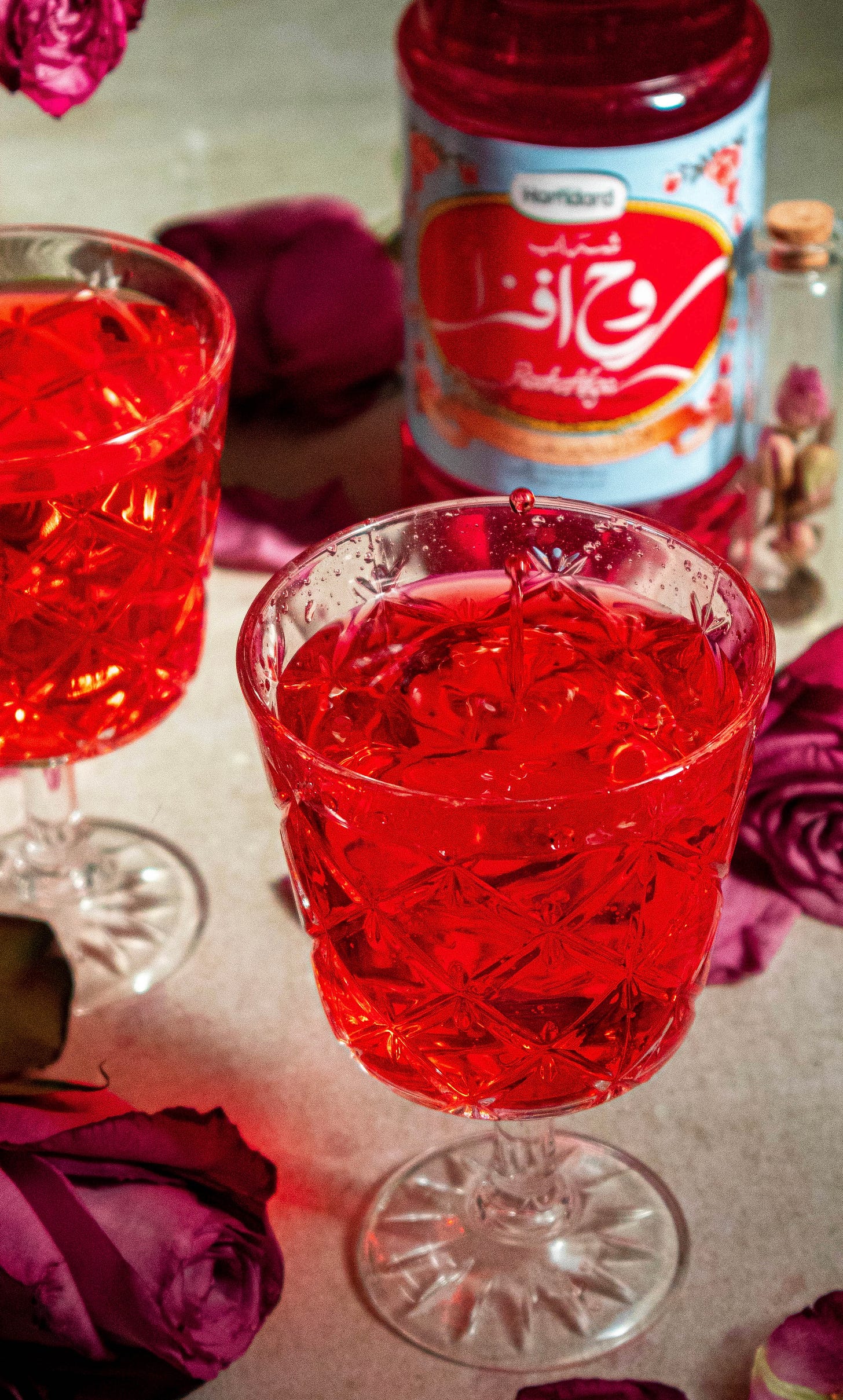Welcome to the Brown History Newsletter. If you’re enjoying this labour of love, please do consider becoming a paid subscriber. Your contribution would help pay the writers and illustrators and support this weekly publication. If you like to submit a writing piece, please send me a pitch by email at brownhistory1947@gmail.com. Check out our Shop and our Podcast. You can also follow us on Instagram and Twitter.
The Story of Rose Water and Rooh Afza by Nashwa Ansari
Rose water is the scent of nostalgia – it is the aroma of celebrations, the taste behind the desserts like Faluda that cool us down during scorching summers, the magical extract our grandmothers apply to our faces while telling us stories of its wonders, and the refreshing essence behind one of South Asia’s most famous drinks – Rooh Afza. For centuries, Arq-e-Gulab or rosewater has been an elixir in South Asia and beyond, revered for its application in various forms. Initially used medicinally, today rose water is most known for its cosmetic and culinary uses. The process of distilling rose petals to extract their essence originated in Persia, highlighting the strong Persian influence on various aspects of culture and tradition within South Asia, the word Gulab originating from the Persian word Golāb. The physical and symbolic value of the flower essence has stood the test of time, and one of the most prevalent applications of this value is seen through Rooh Afza, the rose-coloured syrup that is a staple throughout the region.





